Trip date: March 2022
Why Medellín?
- I really enjoyed my first trip to Bogotá last October.
- This is a city that has gone through so much transformation.
- It is the closest city to La Piedra del Peñol.
I didn’t think I would be back in Colombia only after a few months. When it was time to think about a place to go, I looked at several places in South America including Argentina, Chile and Colombia. I quickly decided on Colombia as this would be a quick trip and therefore I didn’t want to fly too far from home.
My original thought was to visit Santa Marta, to be on the Caribbean coast. That said, I am not a beach person. In addition, Santa Marta didn’t look too safe based on recent travel reviews. I finally decided on Medellín.

Medellín… a Safe Place?
Medellín always had a bad reputation. After all, when you tell people you’re going to Colombia (and then Medellín), the first reaction you get is, “Why?” Then you’d get a lecture on safety. I quickly booked my flights in any case and I was set.
That said, as with any large city, minimize what you bring. Don’t wear flashy jewelry. Don’t take out your phone unless you need to. Be aware of your surroundings.
Day 1: Changes in Plans to a Leisurely Walk in El Poblado
My first day was a painful one. After arriving in Bogotá before 5am, I wasn’t able to catch the next flight to get to Medellín. Medellín airport had an emergency landing the day before which closed the airport. As a result, all flights were full as airlines were trying to shuttle people between Medellín and other cities. I therefore couldn’t make it to Guatapé, and instead opted to check into my Airbnb and take a leisurely day and walk around the neighborhood in El Poblado.
Poblado is considered the best neighborhood in Medellín, and is where most visitors stay (along with Laureles). The center of Poblado is Calle 10, which is the major thoroughfare with restaurants, bars and shops. As you’re walking through Poblado it feels like you’re in a jungle. There is so much greenery in this area. All of a sudden I found myself in the midst of an afternoon downpour.
Once the rain subsided, I sat at Cafe Velvet and got myself some coffee and red velvet cake and spent a bit of time there just to relax a bit. There were quite a few digital nomads working, including one on a Zoom call.
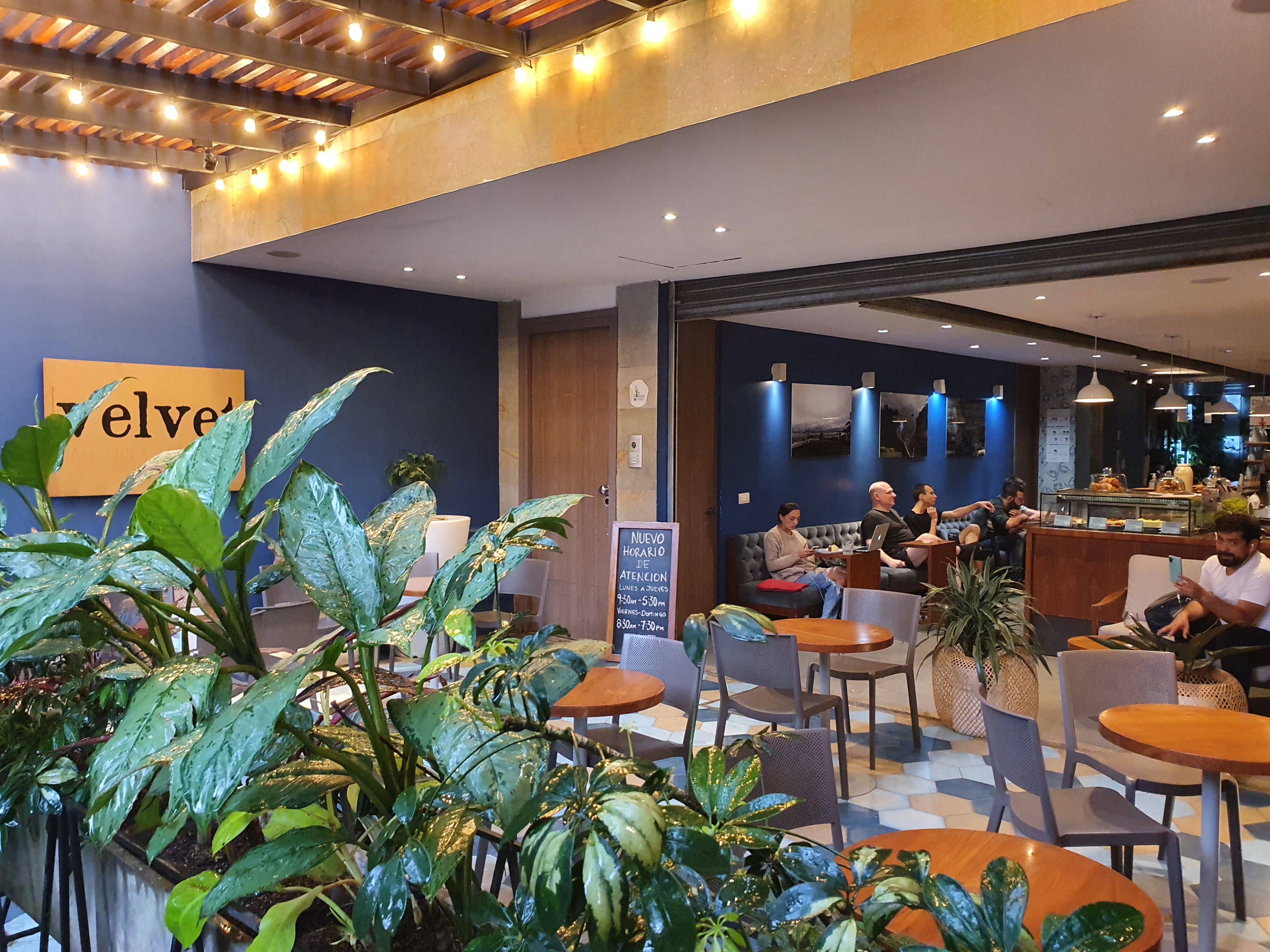
Day 2: Walking Tour in Centro

After getting a good night’s sleep (I think I passed out), I went to Pergamino Cafe for some breakfast: a chocolate croissant and a tinto. I then took an Uber to Plaza Botero in the city center for the free walking tour from Beyond Colombia. I used them during my trip to Bogotá last year and had a great experience.
During the three hour walking tour, I got to learn a bit about Medellín’s history and see a bit of daily life in action. This city has come a long way over the last 20+ years. Sadly it still has a ways to go. I was approached by a gentleman who spoke perfect American English, claiming he’s Venezuelan who was deported from Miami. I gave him 2.000 Colombian Pesos (US$0.53). Our guide said he’s seen him over the last month and he’s looking worse each time.
In any case, I highly recommend the walking tour. It is safe to walk with a group of people, and you get to meet some fellow travelers in the process.


Day 3: Day Trip to Guatapé

This was the main event of the trip: the trip out to Guatapé. We left the Airbnb at 7:30 in the morning and it took a bit of time to get to the rock itself, called the La Piedra del Peñol. We arrived just before 10 in the morning and there were virtually no tourists. The cost of the climb is 20.000 Colombian Pesos (US$5.30), and you’ll need to show your vaccination card at the entrance (screenshot is fine).
The climb was challenging, as I haven’t exercised regularly for about a year. But 700+ steps later I was at the top of the rock, and the view of the reservoir below was spectacular. On the way down was when I saw loads of tourists going up, so do arrive early.
After the climb I got to spend some time in the colorful town of Guatapé. We were hungry so I bought lunch for myself and my driver. I finally got a chance to have some Bandeja Paisa!
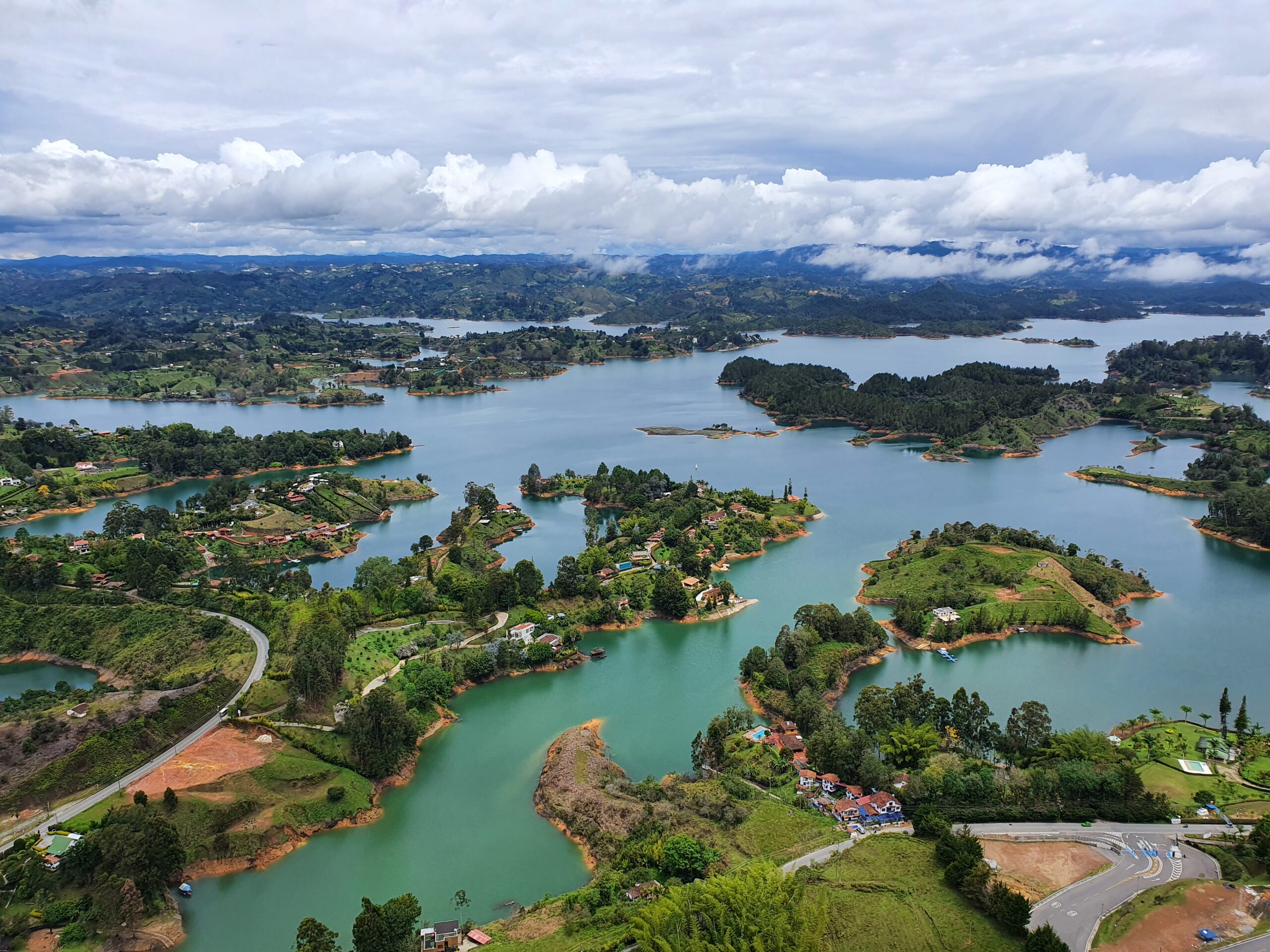
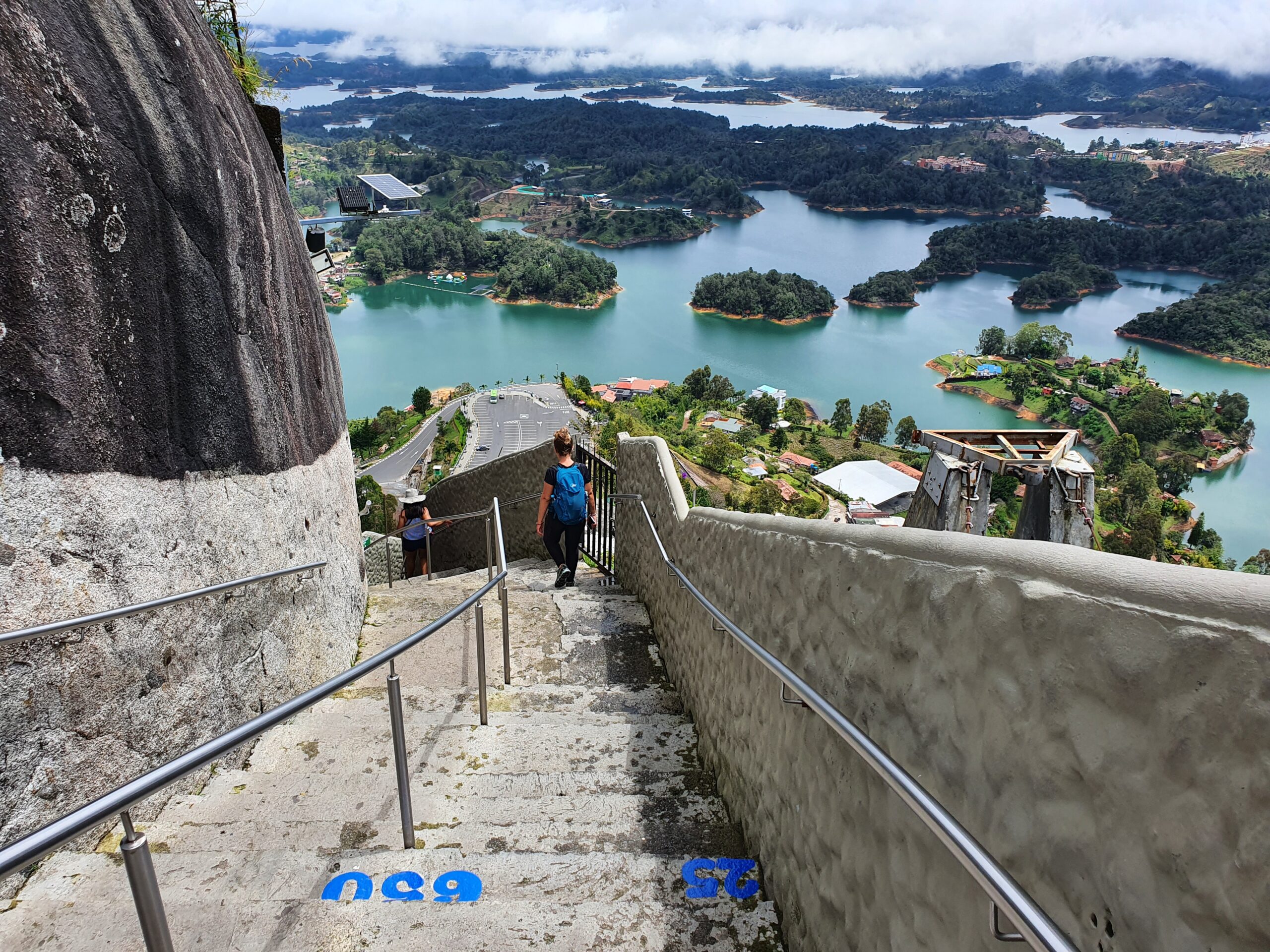
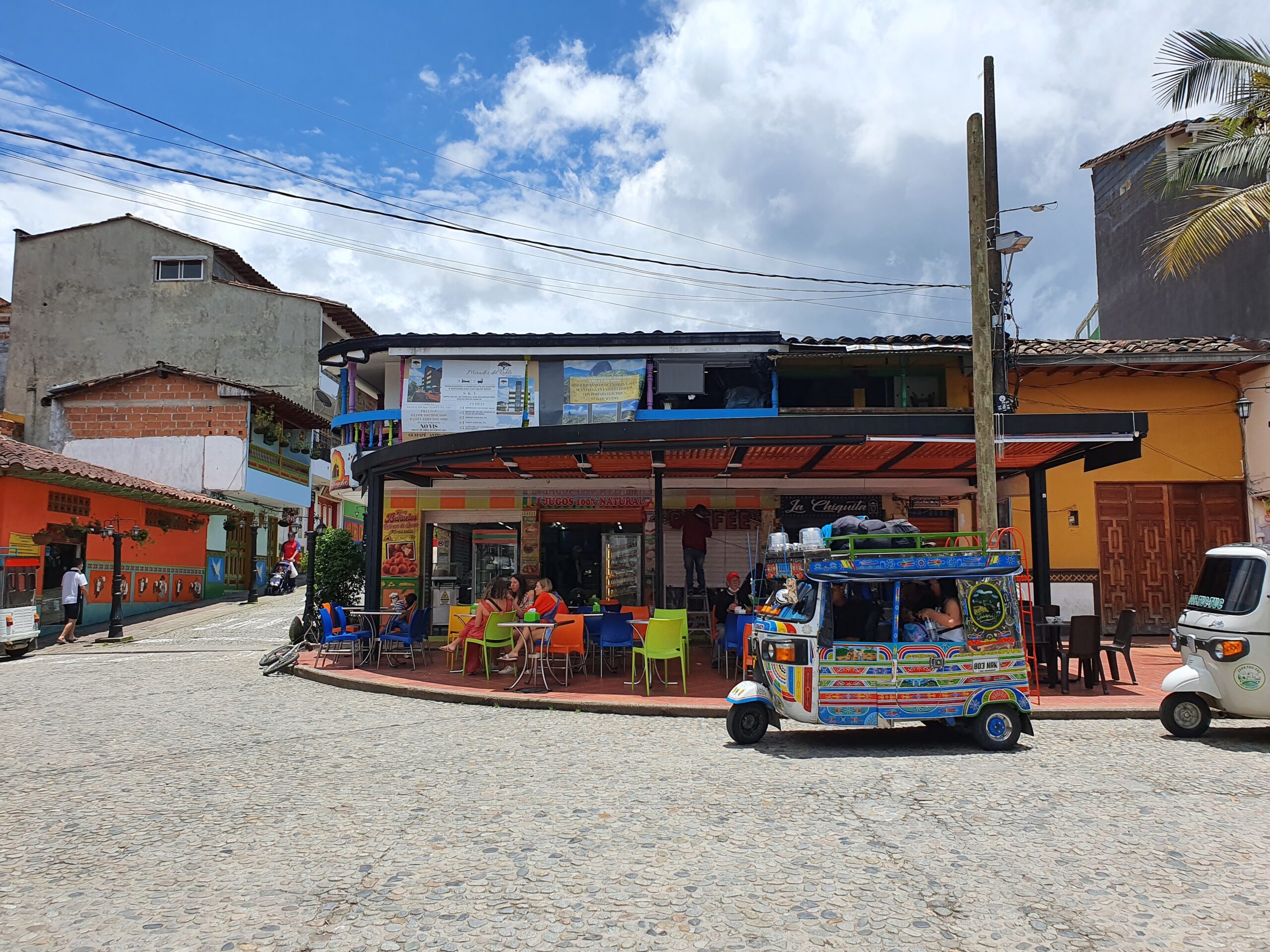

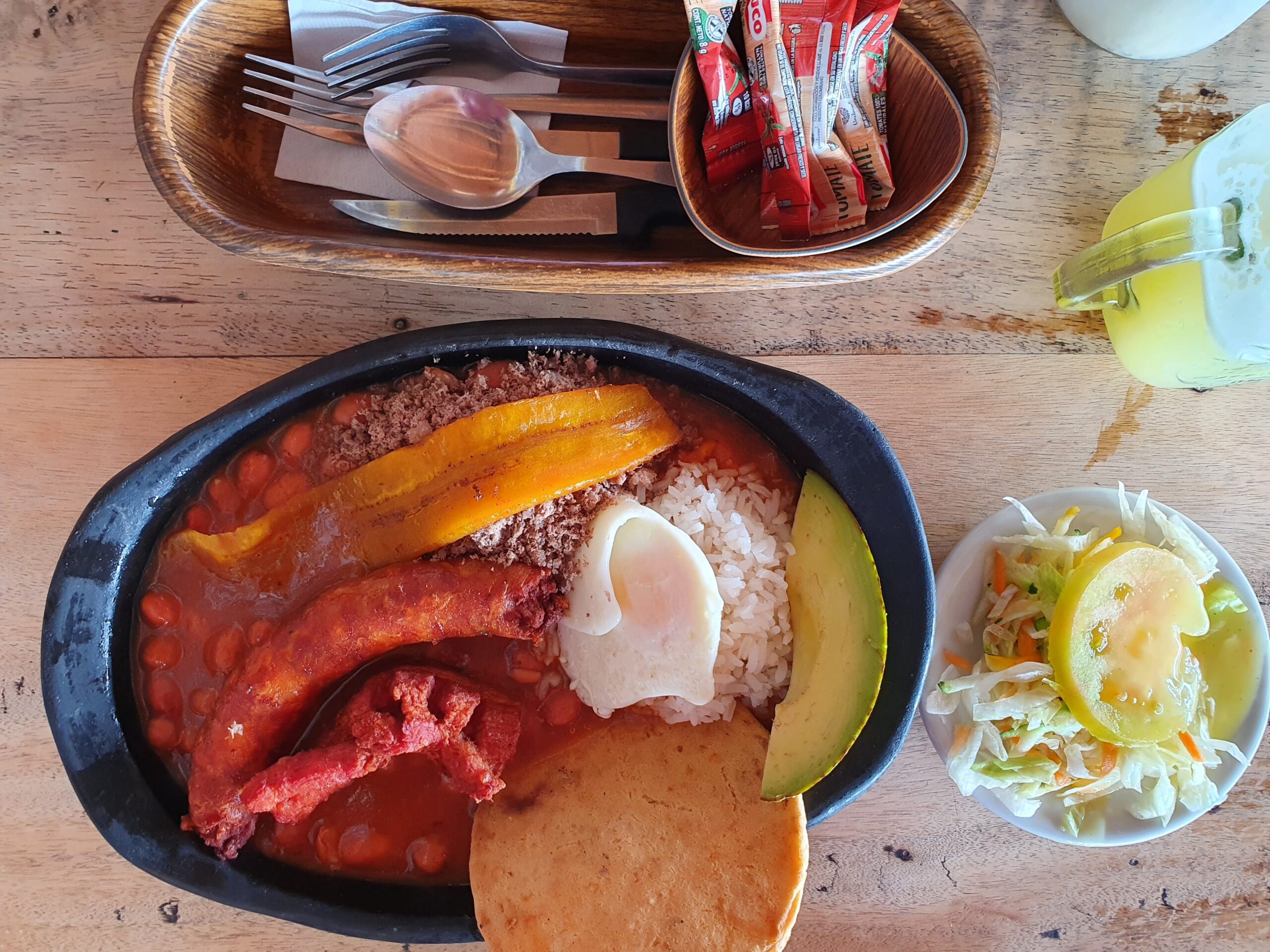
Day 4: Comuna 13 Graffiti Tour
On my last day, I went on the Comuna 13 tour. This was not on my list originally, as I didn’t want to participate if the tour made it into an amusement park-style visit. Thankfully I was able to find a guide who lives there currently, which made me want to support the community by taking the tour.
My guide (of course) knew the history of the community, although he’s originally from a different part of Colombia. That said, what I saw was a community making it on its own through tourism. There were no beggars on the street (we were asked NOT to give money to children if we saw any), just ordinary people making a living through selling food, souvenirs or simply street performances.
To complete my trip, I took the famous cable car ride through Comuna 13 and got to see everything from above. That was a treat.
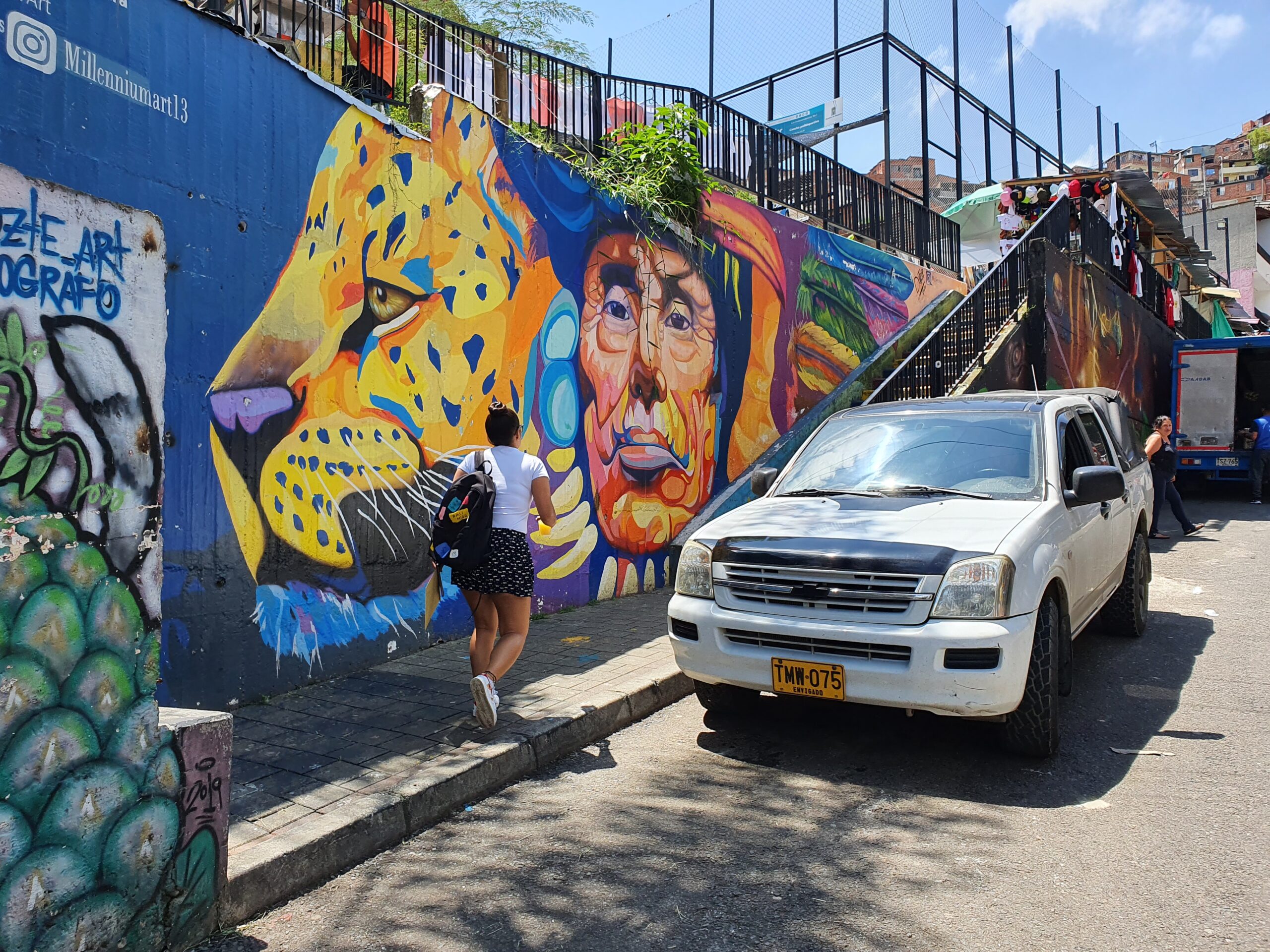




Do Visit
This was a short yet (another) wonderful trip. I had my own apprehensions before visiting Medellín, but was glad that I made the trip. As with any large city, do take precautions to stay safe.
Practical Information
Airport Transportation: The official rate for white taxis at José María Córdova Airport (MDE) from the airport to Poblado was 90.000 Colombian Pesos (US$23.86) in March 2022. The return trip to the airport was 80.000 Colombian Pesos (US$21.21). Tunnel tolls are included, and no tipping required.
City Transportation: I used either the Metro or Uber depending on where I needed to go. To use the Metro, you will need a Civica Card, which is a rechargeable card to use with the metro, cable car and the tram. The card itself will cost 5.000 Colombian Pesos (US$1.33). You will then need to recharge (top-up) in order to use the card. For Uber, just use your app. Uber was between 12.000 to 14.000 Colombian Pesos (US$3.18 – $3.71) per ride, including tip. Uber isn’t “official” in Medellín.
Immigration procedures: You must fill out a Check Mig Form for entering and exiting Colombia. This form must be filled out no more than 72 hours of your flight. You don’t need to print the form out, but save it on your phone so you can show it to the immigration officer on arrival. On departure, they will check the form before you enter the immigration area.
Covid Testing: There is no testing requirement for entering Colombia. Please check the requirements for the return to your home country.
Where to stay: Usually foreigners stay in El Poblado or Laureles.
Money: Colombian Pesos. At the time of travel, US$1 = COP 3,760 (March 31, 2022). The one thing to remember is that you don’t need a lot of cash except with street vendors. Carry bills in smaller denominations (20.000 pesos and below) as that would make it easier for you to get change.
Tipping: At restaurants they will ask you if you want to include service (propina). You usually say yes. They will then add 10% to the bill.
Internet/Mobile Data: Internet is fast. For mobile data, you can purchase prepaid SIMs with one of the major carriers such as Claro or Movistar. I purchased one from Movistar when I was in Bogotá last year, and I was able to recharge (top-up) in the US using my US credit card. If you plan to buy a new one, go to one of those offices and bring your passport to buy your package.
Maps: As best practice, download an offline map using Google Maps to minimize data usage.
Weather: The weather report is not to be trusted. All of the weather sites predicted thunderstorms. I experienced afternoon downpours each day but it was only for a short period of time.
Official Tourism Site: The Colombia.travel site is the official place to go for information.
Postcard Rate: 5.000 Colombian Pesos, globally (US$1.33). The post office is called “4-72” so that would be what you need to look for. Postcards are very difficult to find in Colombia, but I was able to find one at the rock in Guatapé for 1.000 Colombian Pesos apiece (US$0.27), and it was quite old and… ugly.

